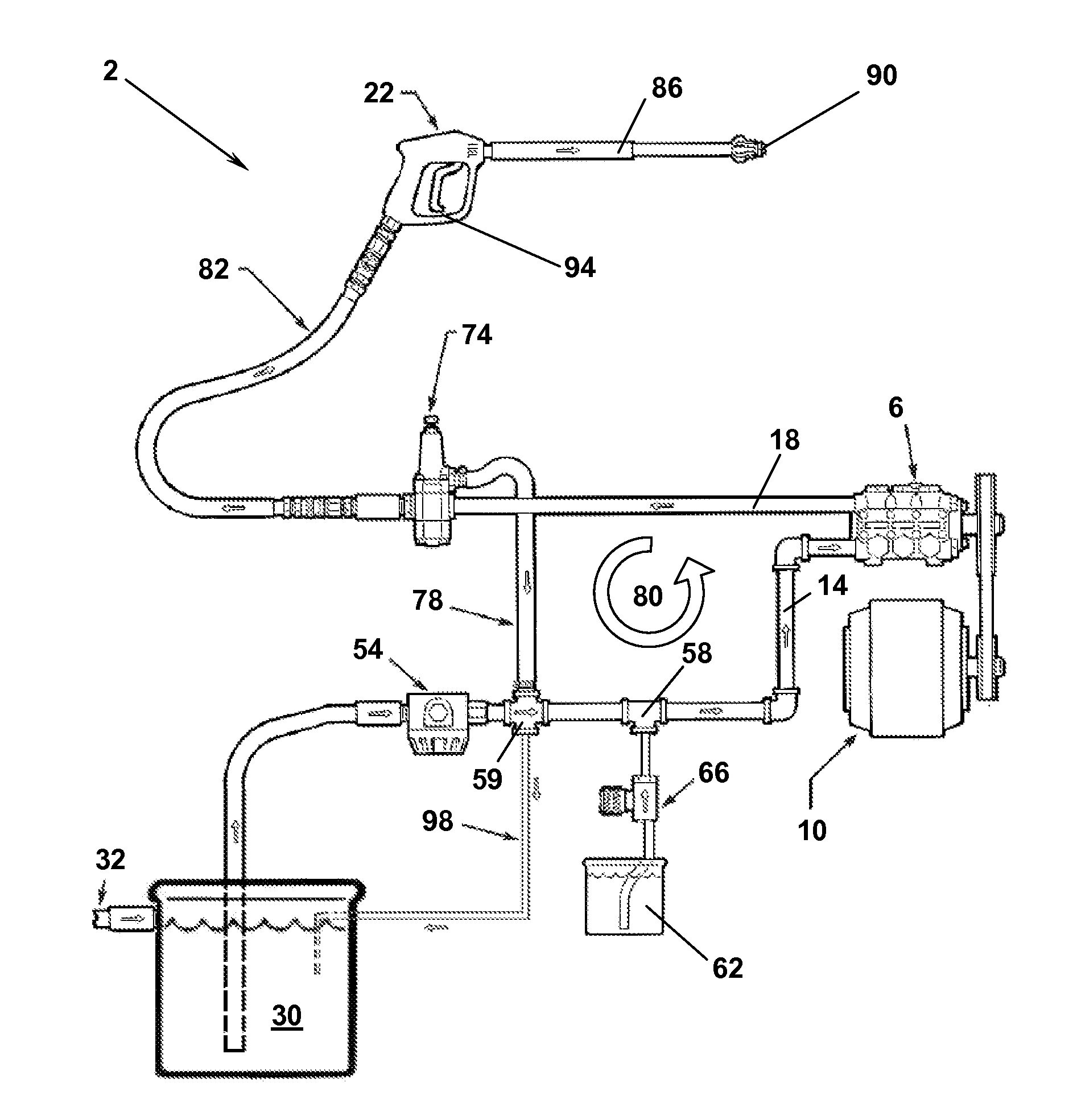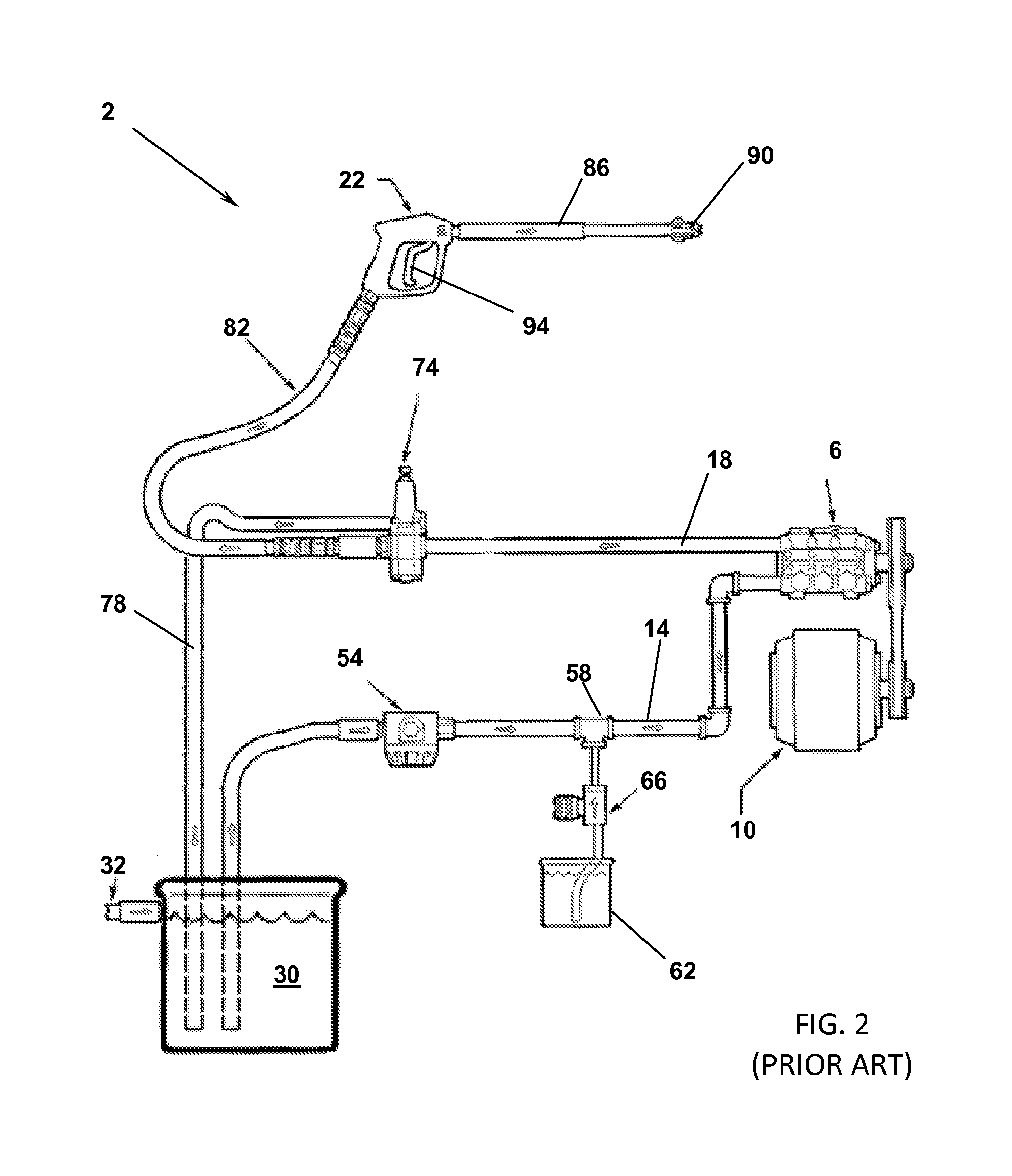Pressure Washer Device Employing a Cool Bypass
a technology of pressure washer and bypass, which is applied in the direction of positive displacement liquid engine, combustion type, etc., can solve the problems of unfavorable system shutdown, and device has a tendency to overheat the cleaning fluid and/or develop unacceptably high system pressure, etc., to prevent siphoning and prevent overheating the pump
- Summary
- Abstract
- Description
- Claims
- Application Information
AI Technical Summary
Benefits of technology
Problems solved by technology
Method used
Image
Examples
Embodiment Construction
[0023]Referring now to FIG. 1, a typical pressure washer hydraulic device 2 of the prior art is shown. Here, water from a water source is directed to a fluid storage tank 30 which is interconnected via a pump inlet conduit 14 that is also associated with a tee 50. An inlet filter 54 may be positioned within the pump inlet conduit 14 to ensure that contaminants do not enter into the pressure washing device that may damage or clog the same. A second tee 58 is also associated with the pump inlet conduit 14 and is also associated with a detergent container 62 and a metering valve 66 that selectively feeds (typically via a suctioning effect) a predetermined amount of detergent to the fluid carried in the pump inlet conduit 14.
[0024]The pressure washer device system 2 also includes a pump 6 that is powered by a motor 10 by a traditional means, such as a pulley drive system. The pump 6 suctions water from the water fluid supply tank 30, which is mixed with the detergent from the detergent ...
PUM
 Login to View More
Login to View More Abstract
Description
Claims
Application Information
 Login to View More
Login to View More - R&D
- Intellectual Property
- Life Sciences
- Materials
- Tech Scout
- Unparalleled Data Quality
- Higher Quality Content
- 60% Fewer Hallucinations
Browse by: Latest US Patents, China's latest patents, Technical Efficacy Thesaurus, Application Domain, Technology Topic, Popular Technical Reports.
© 2025 PatSnap. All rights reserved.Legal|Privacy policy|Modern Slavery Act Transparency Statement|Sitemap|About US| Contact US: help@patsnap.com



